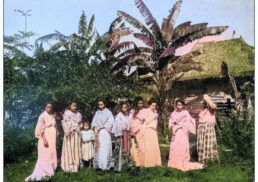The Wheel of the Year represents a rich tapestry of seasonal celebrations that are deeply rooted in ancient traditions and have been reinterpreted within contemporary Pagan practices.
This article offers a comprehensive exploration of the eight Sabbats, delving into their historical origins, significance, and modern-day observances.
By examining key dates and seasonal transitions, readers will uncover various ways to honor these sacred moments in their daily lives. The connection with nature through the Sabbats can significantly enhance one’s spiritual practice.
We invite you to explore the enduring relevance of these vibrant celebrations in today’s world.
Table of Contents
Key Takeaways:
- The Sabbats hold a rich history and play a significant role in honoring nature’s cycles and the changing of the seasons.
- Modern Paganism embraces the Sabbats as a way to connect with nature, honor ancient traditions, and incorporate spiritual practices into daily life.
- By celebrating the Sabbats, individuals can deepen their connection with the natural world, find balance, and align with the changing energies of the universe.
Origins and Significance of the Sabbats
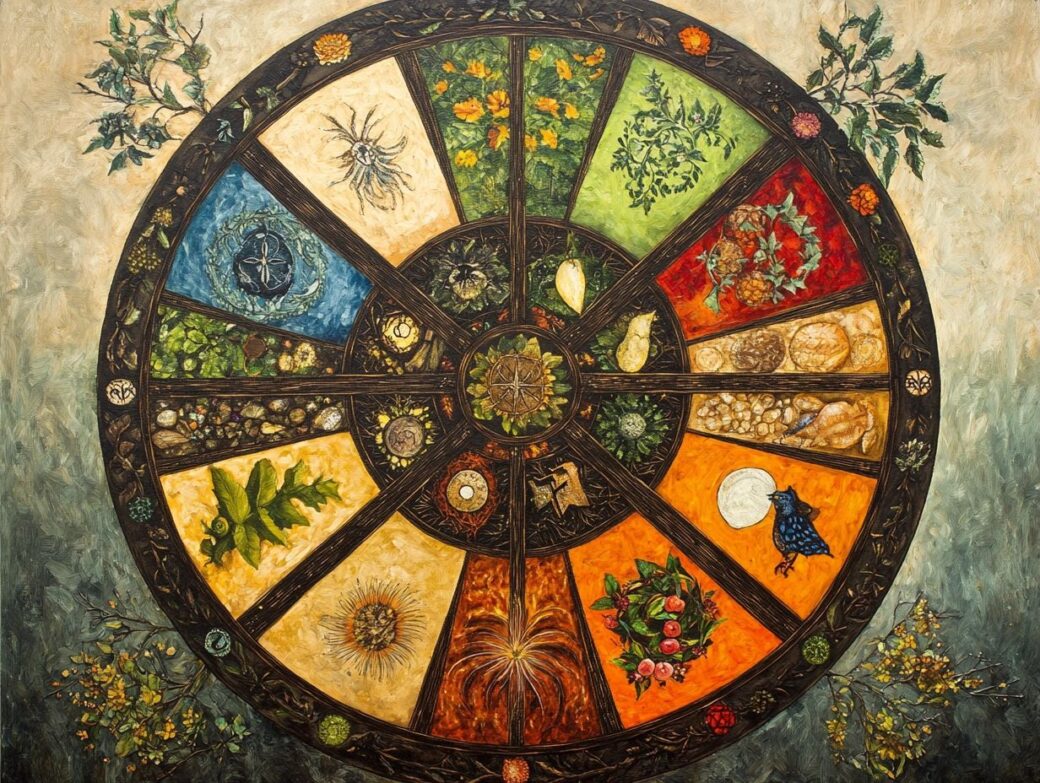
The origins of the Wheel of the Year, a concept that is integral to modern Paganism, can be traced back to ancient practices of Celtic cultures and various ancestral religions. These traditions celebrated the changing seasons through a series of eight sabbats.
The seasonal celebrations, characterized by fire festivals and rituals, fostered a profound spiritual connection with nature, enabling practitioners to honor agricultural cycles, balance, and transformation in their lives. Each sabbat embodies distinct themes that resonate with the rhythms of nature and human existence, providing practitioners with an opportunity to reflect on cultural norms and promote ecological awareness.
By observing these sabbats, individuals connect with a heritage that emphasizes the significance of seasonal changes and acknowledges the deeper spiritual meanings inherent in life’s cycles. From the rebirth celebrated at Imbolc to the harvest festivals of Mabon, each sabbat serves as a poignant reminder of the interconnectedness of life and the earth’s bounty.
This cyclical nature encourages modern practitioners to engage in rituals that ground them in their environment, fostering a sense of community while enhancing personal growth.
Collectively, the sabbats weave a rich tapestry of tradition that draws upon ancient wisdom while inspiring contemporary practices aimed at cultivating awareness and harmony with the natural world.
The Eight Sabbats of the Wheel
The eight sabbats of the Wheel of the Year: Exploring the Sabbats in Modern Pagan Practice represent significant milestones in the seasonal cycle that are celebrated by modern Pagans. These include:
- Imbolc
- Ostara
- Beltane
- Litha
- Lughnasadh
- Mabon
- Samhain
- Yule
Each sabbat is associated with particular agricultural cycles and spiritual themes, such as new beginnings, gratitude, and harvest. These celebrations are deeply rooted in the traditions of Celtic cultures and other ancestral religions, providing a structured framework for nature-centered Pagan practices.
Dates and Corresponding Seasons
Each of the eight Sabbats of the Wheel of the Year is observed on a specific date, closely aligned with seasonal celebrations that reflect the agricultural and climatic changes throughout the year. These include Imbolc in February, Ostara at the Spring Equinox, Beltane in May, Litha at the Summer Solstice, Lughnasadh in August, Mabon at the Fall Equinox, Samhain in October, and Yule at the Winter Solstice.
These celebrations not only signify the transitions of the seasons but also serve as important reminders of the ancient practices and cultural traditions that have been interwoven with human existence.
For instance, Imbolc marks the initial signs of spring, representing a time to honor fertility and the revival of life on the land following the depths of winter. Ostara embodies renewal and balance, where day and night are of equal length, prompting farmers to begin planning their crops.
Each Sabbat represents a pivotal moment in the agricultural calendar, influencing activities such as planting, harvesting, and communal gatherings. These events foster a deep connection to the Earth and its cycles, a relationship that has persisted through generations.
Modern Interpretations and Practices
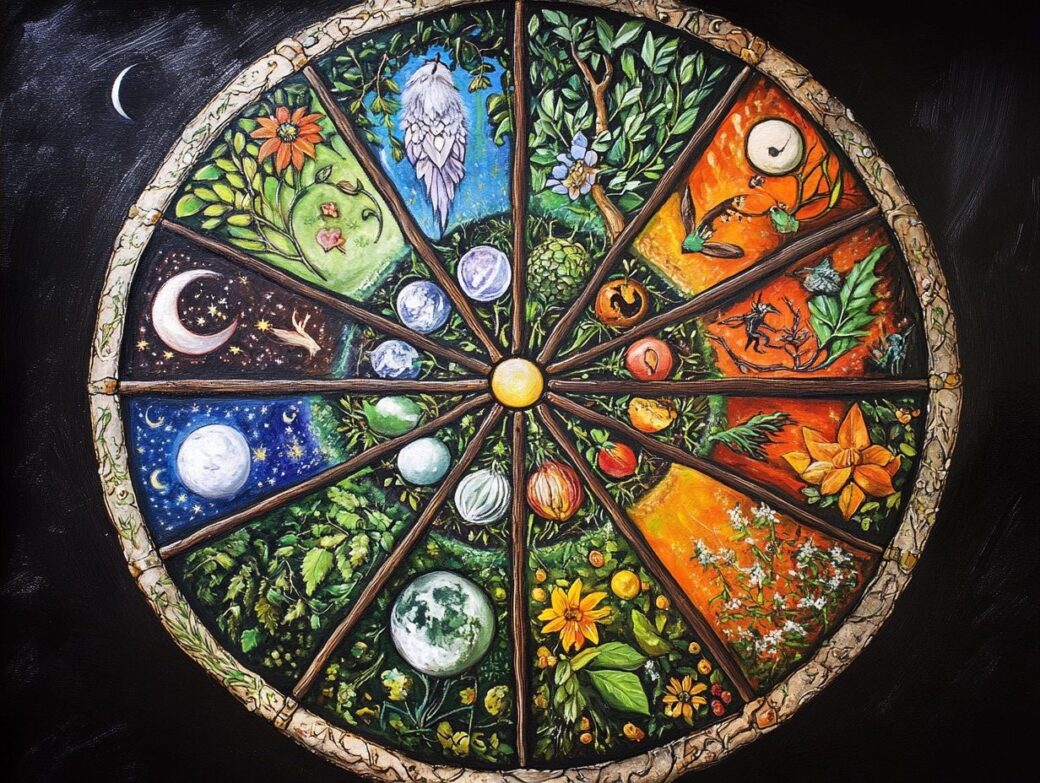
Modern interpretations of the Wheel of the Year have evolved to incorporate a range of spiritual practices that reflect contemporary ecological awareness and community engagement.
Contemporary Pagans frequently blend traditional rituals with innovative concepts, placing a strong emphasis on the importance of connecting with nature and honoring the cycles of life through their celebrations and worship.
This approach has enabled modern witchcraft to flourish in distinctive and diverse ways.
How the Sabbats are Celebrated Today
The sabbats are currently observed in a variety of ways, reflecting the diverse traditions present within modern Paganism. Community gatherings, rituals, and personal spiritual practices play crucial roles in commemorating these significant events.
For example, during Beltane, individuals frequently organize vibrant bonfire celebrations that symbolize fertility and the resurgence of life following the winter season, complemented by the presence of lush greenery and flowers adorning altars.
Similarly, Samhain unites communities in honoring their ancestors, featuring shared feasts that highlight seasonal produce such as pumpkins and apples, while candles are lit to guide spirits home.
These rituals foster a profound sense of connection among participants, allowing them to engage in meaningful traditions that resonate with themes of renewal, gratitude, and remembrance. Observances throughout the wheel of the year not only reinforce communal bonds but also enhance personal faith and worship for those involved.
Honoring the Sabbats in Personal Practice
Honoring the Sabbats in personal practice enables individuals to foster a deeper spiritual connection with nature and the Wheel of the Year.
This integration of ritual practices aligns with their beliefs and reflects the seasonal cycles of life.
Ways to Incorporate the Sabbats into Daily Life
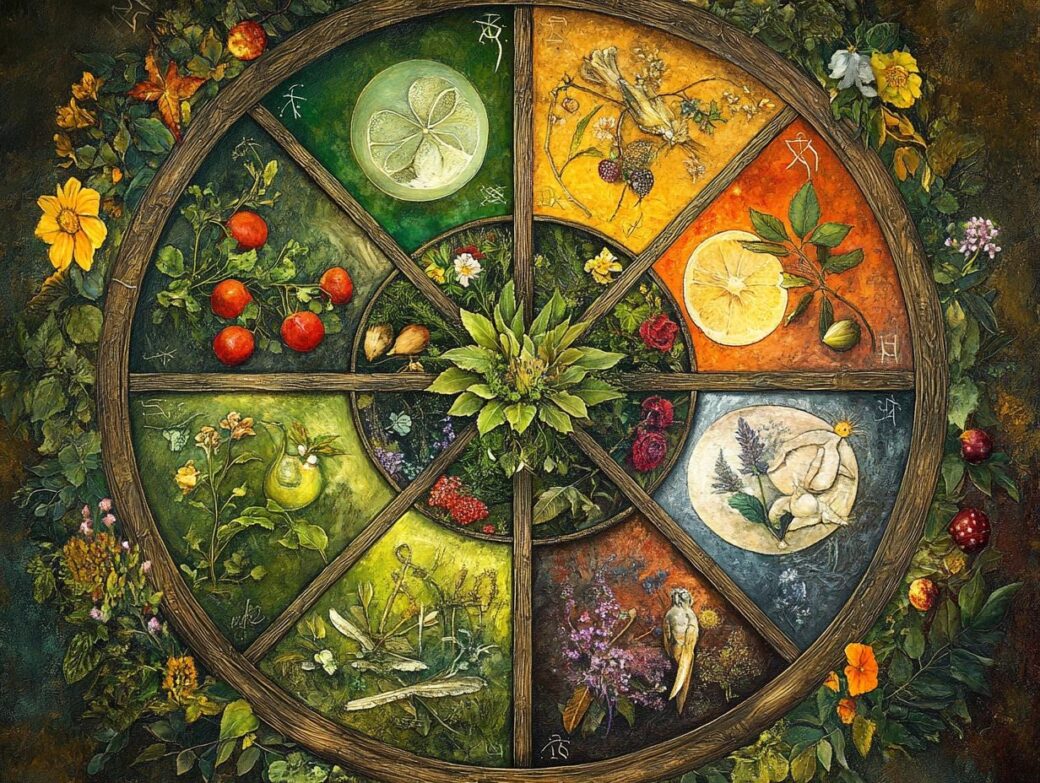
Incorporating the sabbats into daily life can be accomplished through simple yet meaningful practices, such as creating personal altars, observing the changes in nature, and performing rituals that honor the distinct themes associated with each sabbat.
By dedicating a few moments each day to engage with the elements of nature, individuals can enhance their understanding of the seasonal cycles and the energies they encompass. For example, a morning walk may reveal the emergence of spring blooms, prompting reflections on the themes of rebirth and renewal associated with Ostara.
Lighting a candle on the altar during a particularly busy week can serve as a gentle reminder of the fire festivals, facilitating contemplation and intention-setting in alignment with the spirit of Lammas or Beltane.
Furthermore, gathering with friends to share stories or experiences under the full moon can strengthen community connections while celebrating the lunations, fostering a sense of belonging and spiritual grounding.
Connecting with Nature through the Wheel of the Year
Connecting with nature through the Wheel of the Year underscores the significance of ecological awareness and the spiritual relationship between individuals and the natural environment.
Each sabbat serves as a reflection of seasonal cycles and the profound transformations they introduce into our lives.
The Natural Cycles Reflected in the Sabbats
The natural cycles represented in the sabbats underscore the interconnectedness of life, as each celebration corresponds with the changing seasons, agricultural cycles, and the rhythms of nature. This fosters a profound ecological awareness and appreciation for the natural world.
As the wheel of the year progresses through the phases of sowing, blooming, harvesting, and resting, these sacred observances serve as a reminder of individuals’ integral roles within the ecosystem. Each sabbat acts as a powerful testament to the importance of nurturing the land, featuring rituals that honor the earth’s abundance and emphasize the necessity of stewardship.
For instance, during Beltane, the vibrancy of newly planted seeds is celebrated, cultivating a deep respect for the nurturing soil that sustains life. Similarly, Lammas commemorates the fruits of labor during the harvest phase, reinforcing the mutual dependence between humanity and the planet.
Collectively, these themes promote a harmonious relationship with nature, encouraging practitioners to recognize their place within the grand tapestry of existence.
Embracing the Wheel of the Year in Modern Paganism
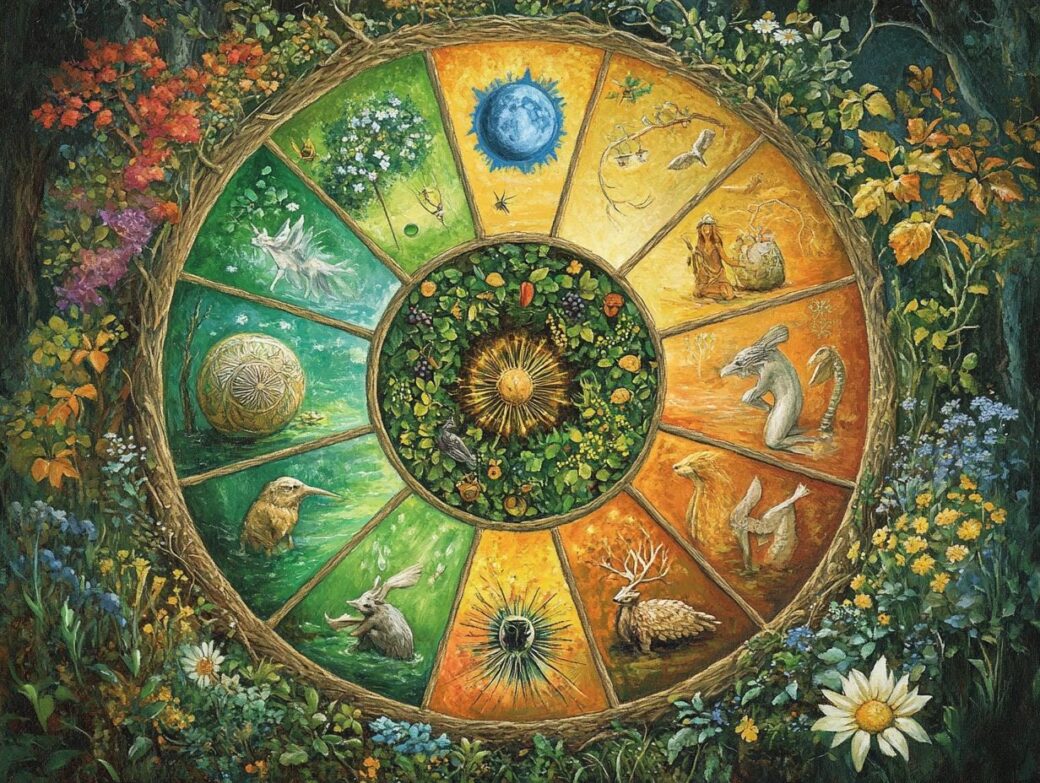
Embracing the Wheel of the Year in modern Paganism involves a diverse array of practices and beliefs that enable individuals and communities to honor their spiritual heritage while also adapting to contemporary values and addressing environmental concerns.
The Role of the Sabbats in Modern Pagan Beliefs and Traditions
The role of the sabbats in modern Pagan beliefs and traditions is of paramount importance, as these seasonal celebrations serve as essential anchors for spiritual practices and community gatherings, fostering a collective sense of identity and purpose.
Each sabbat signifies a crucial point in the wheel of the year, establishing a connection between practitioners and the cycles of nature as well as the rhythms of life. These festivities not only commemorate the changing seasons but also embody themes such as rebirth, harvest, and gratitude, which resonate profoundly with the values of unity and respect for the earth.
Individuals are afforded opportunities to engage in rituals and ceremonies that promote personal growth and deepen their connection to the divine. Participants frequently collaborate within their communities, thereby strengthening bonds through shared activities, workshops, and feasts, all of which collectively enhance a sense of belonging and spiritual fulfillment.
Reflections on the Meaning and Relevance of the Sabbats in Modern Times
Reflecting on the significance and relevance of the sabbats in contemporary society underscores their enduring importance as a means of fostering spiritual connection, ecological awareness, and a deeper understanding of our relationship with nature and the cycles of life.
These ancient observances encourage individuals to consider their roles in promoting sustainability and addressing climate change. By aligning personal rhythms with the natural world, individuals can develop a heightened sense of responsibility towards the environment, acknowledging the fragile balance within ecosystems.
The sabbats act as powerful reminders of the interconnectivity among all living beings, prompting a reflective exploration of personal spirituality. As they signify the changing seasons, these celebrations can inspire a deliberate effort to coexist harmoniously with nature, paving the way for a more compassionate and sustainable lifestyle.

